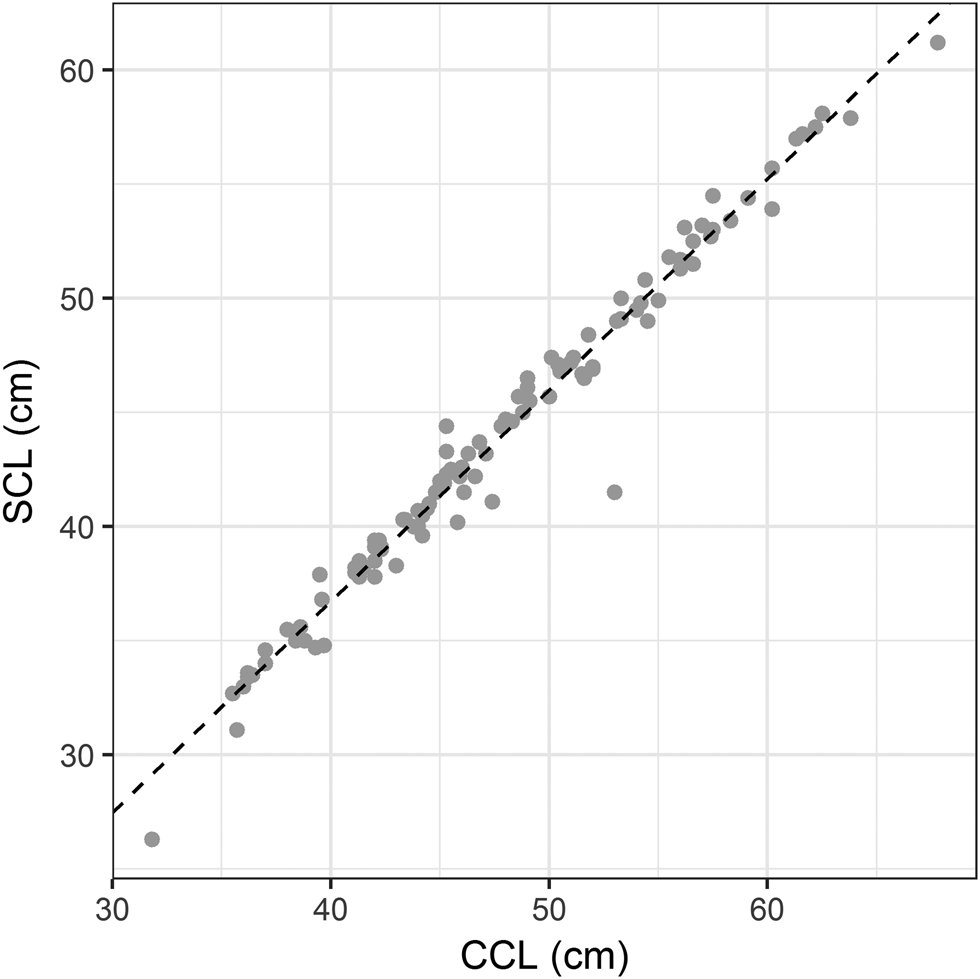The authors apologize that within the above article, Rossi et al. (Reference Rossi, Sánchez-Sarmiento, Santos, Zamana, Prioste, Gattamorta and Matushima2019), the captions for Figures 1 and 2 were transposed. Please see the correct image captions below.

Fig. 1. Geographic distribution of study area. In parentheses: total number of green turtles per state.

Fig. 2. Linear regression between curved carapace length (CCL) and straight carapace length (SCL) from green turtles studied along the Brazilian coast (R-squared = 97.6%, P-value < 0.0001).




